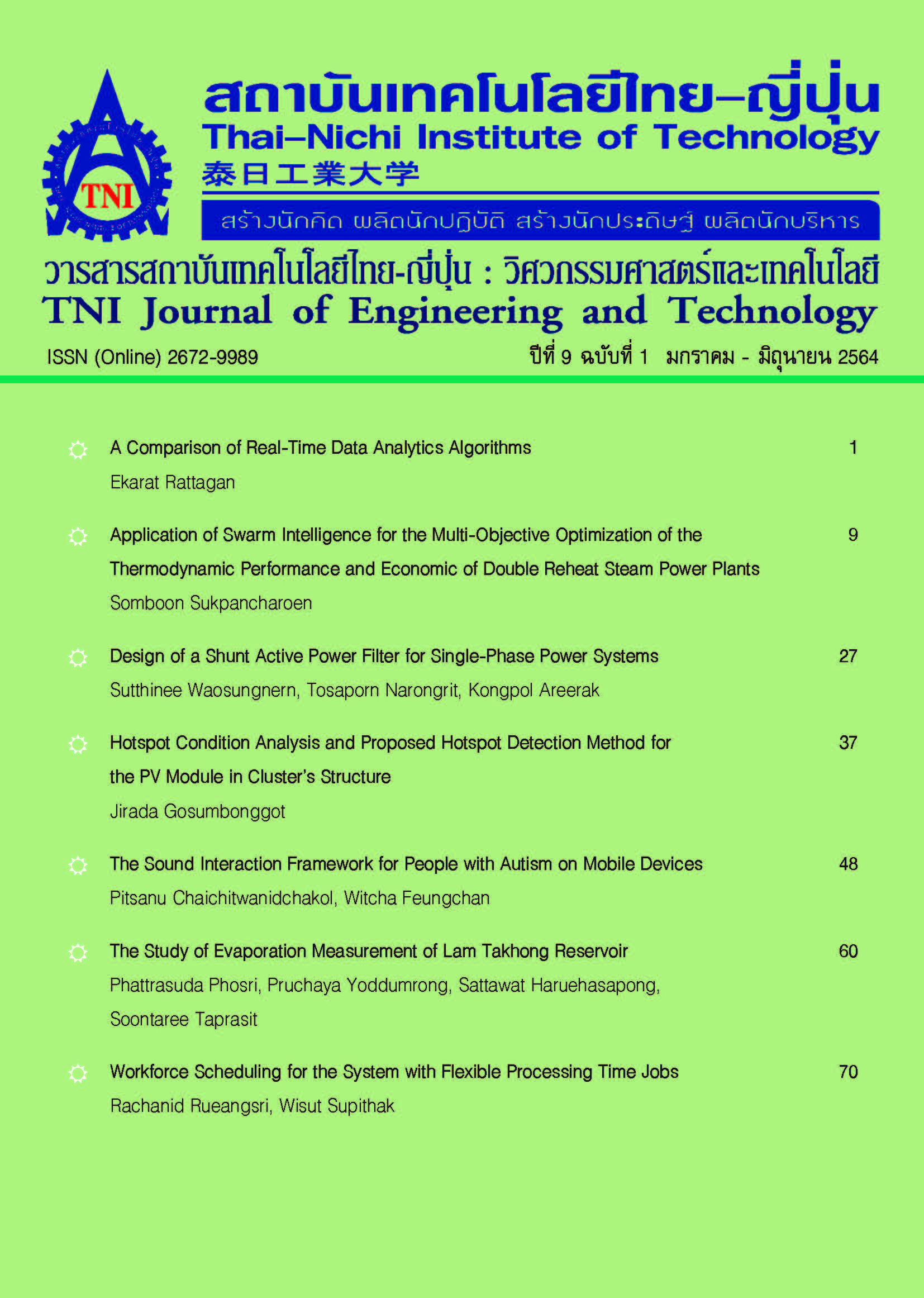Workforce Scheduling for the System with Flexible Processing Time Jobs
Main Article Content
Abstract
The research aims to determine the schedule of multiple jobs waiting to be processed by limited number of workers. Each job has its own minimum and maximum number of workers required. The processing time of each job is flexible depended on number of workers being assigned to perform the job. The scheduling objective is to minimize the system makespan. In order to determine a proper solution for the research problem, a two-phase heuristic is presented. The first phase is to cluster jobs according to the maximum number of workers required and assign workers to each job considering their availabilities. The second phase is to reduce number of jobs being assigned to the worker having maximum completion time. For the performance evolution of proposed heuristic, 30 small size and 30 large size problems are randomly generated. The solution obtained from the heuristic has been compared with the solution yielded from searching for the solution of a mathematical model by the evolutionary method. According to the results of small size problems, the solution provided by the proposed heuristic has the makespan value of 1.57 percent greater than the solution yielded from the evolutionary search. For those large size problems, the proposed heuristic yields better solution than the evolutionary search with the average percentage deviation of 15.54 percent.
Article Details
Article Accepting Policy
The editorial board of Thai-Nichi Institute of Technology is pleased to receive articles from lecturers and experts in the fields of engineering and technology written in Thai or English. The academic work submitted for publication must not be published in any other publication before and must not be under consideration of other journal submissions. Therefore, those interested in participating in the dissemination of work and knowledge can submit their article to the editorial board for further submission to the screening committee to consider publishing in the journal. The articles that can be published include solely research articles. Interested persons can prepare their articles by reviewing recommendations for article authors.
Copyright infringement is solely the responsibility of the author(s) of the article. Articles that have been published must be screened and reviewed for quality from qualified experts approved by the editorial board.
The text that appears within each article published in this research journal is a personal opinion of each author, nothing related to Thai-Nichi Institute of Technology, and other faculty members in the institution in any way. Responsibilities and accuracy for the content of each article are owned by each author. If there is any mistake, each author will be responsible for his/her own article(s).
The editorial board reserves the right not to bring any content, views or comments of articles in the Journal of Thai-Nichi Institute of Technology to publish before receiving permission from the authorized author(s) in writing. The published work is the copyright of the Journal of Thai-Nichi Institute of Technology.
References
K. R. Baker, “Workforce allocation in cyclical scheduling problems: A survey,” Journal of the Operational Research Quarterly, vol. 27, no. 1, pp. 155–167, 1976.
U. S. Pawar and D. B. Hanchate, “Literature review on personannel sheduling,” Int. Journal of Computer Engineering and Technology (IJCET), vol. 4, no. 5, pp. 312–324, Sep. 2013.
D. S. Dewi and T. Septiana, “Workforce sheduling considering physical and mental workload: A case sudy of domestic freight forwarding,” Procedia Manufacturing, vol. 4, pp. 445–453, 2015.
T. Garaix, M. Gondran, P. Lacomme, E. Mura, and N. Tchernev, “Workforce scheduling linear programming formulation,” IFAC-PapersOnLine, vol. 51, no. 11, pp. 264–269, 2018.
S. E. Moussavi, M. Mahdjoub, and O. Grunder, “Reducing production cycle time by ergonomic workforce scheduling,” IFAC-PapersOnLine, vol. 49, no. 12, pp. 419–424, 2016.
M. Liu and X. Liu, “Satisfaction-driven bi-objective multi-skill workforce scheduling problem,” IFAC-PapersOnLine, vol. 52, no. 13, pp. 229–234, 2019.
P. Alcan and H. Başlıgil, “A genetic algorithm application using fuzzy processing times in non-identical parallel machine scheduling problem,” Advances in Engineering Software, vol. 45, no. 1, pp. 272–280, Mar. 2012.


